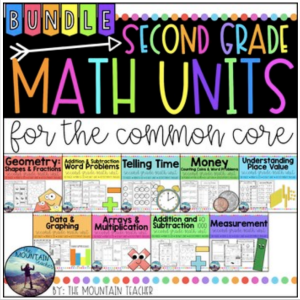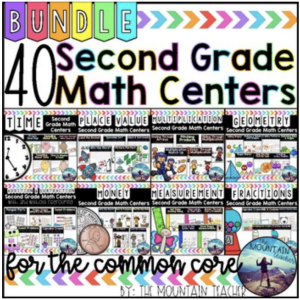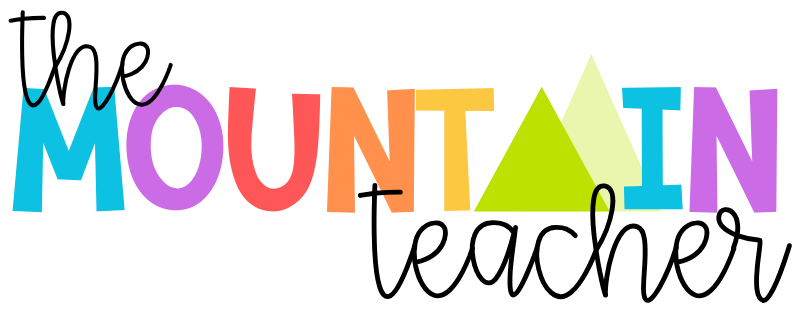Everything You Need to Know to Teach Place Value
Place value is always the very first unit that I teach, as it is the foundation of mathematics. Students cannot work with numbers unless they understand the rationale and meaning of a number. We hit the ground running on day one, and as long as students have had a foundational understanding of numbers in first grade, students are typically very successful during this unit.

Daily Warm Up:
We start math each day right after lunch. I like to give my students a quiet warmup every day to help get their minds in a math brain and so that I am able to take attendance and get prepared for the lesson. During this unit, there are two different warm ups that I like to do.

The first is a “number of the day.” During this warm up, students will see a number on the board, and have to represent that number in multiple ways. I keep this paper in a sheet protector, and students use an EXPO marker each day to solve each different number.

The other warm up I will do, is put 4-6 problems up on the white board that students have been struggling with or that we need to review. I give students time to solve these problems independently in their notebooks or on their own white boards. The problems start easy and get harder. I will always put a “challenge” problem that introduces the skill we will be working on for that day. I give students 10 minutes to work on the problems, go over the first 3 quickly and spend about 5-10 minutes doing a mini-lesson on the challenge problem. BrainPop has AMAZING place value videos to introduce different skills, if you have a membership.
Sequencing:
Although this unit is fast, we tend to go “slow” while we are learning. I start by showing students place value blocks and having them find ways to count them. We then talk about how to count them properly (we start with the ones then go to the hundreds, as this makes it easier for my class when we start adding and subtracting with place value). Then, students move to drawing the blocks, answering word problems about place value, and identifying what each number in a 3 digit number represents. After that, we move on to condensing expanded form, writing 3 digit numbers in expanded form… and then, the dreaded SKIP COUNTING. This is a hard skill, and we spend the most amount of time reviewing this. We spend one day on skip counting by tens, then hundreds, then fives, then we review. Finally, we work on comparing numbers and talking about how to use 3 digits to create either the smallest or largest number possible. Overall, this unit lasts anywhere between 2 or 3 weeks, depending on how long we need to review skip counting.

The Challenge:
As I stated above, the hardest part of this unit is by far skip counting. We start by practicing with various warmup songs EVERY DAY, even before we get to skip counting. I also warn parents in advance in my weekly newsletter about this upcoming skill, and tell them this is a very easy skill to be practicing in the car or when they are out and about. Finally, after I have taught it, if students are still not getting it, we warm up each small group with skip counting drills. I put them in a laminating sheet, and have students practice each day, based on what they need.

Center Ideas & Games:
My kids love the “mystery number” task cards. This is simply just a series of riddles saying “There is a four in the ones place, a six in the hundreds place and a five in the tens place. What is the mystery number?”

In partners, my kiddos love to play “top it,” where they take turn flipping cards with place value blocks on them and the person with the biggest number gets all of the cards.

Place value lends itself well to many different matching games. The ones I use are all “alien” themed, and the kiddos love it! Students match expanded form to the number, they match pictures to the number, etc.

Finally, the number of the day can also make a great independent center.
Anchor Charts:
During this unit, I find it the easiest to just use pre-made anchor charts. I introduce them a day or two at a time, depending on the skill we are working on that day.

Manipulatives:
My favorite manipulatives during this unit are place value blocks and snap cubes. Place value blocks are great for composing and decomposing numbers. Snap cubes are great for helping with skip counting and see how groups of ones can make a ten, and groups of ten can make a hundred.
Resources & Freebies:






Second Grade Math Center Bundle

Best of luck teaching this unit! Let me know if you have any questions, comments or suggestions for teaching this in the comments below. Check back next week for the next math segment on teaching addition and subtraction to 1000.
